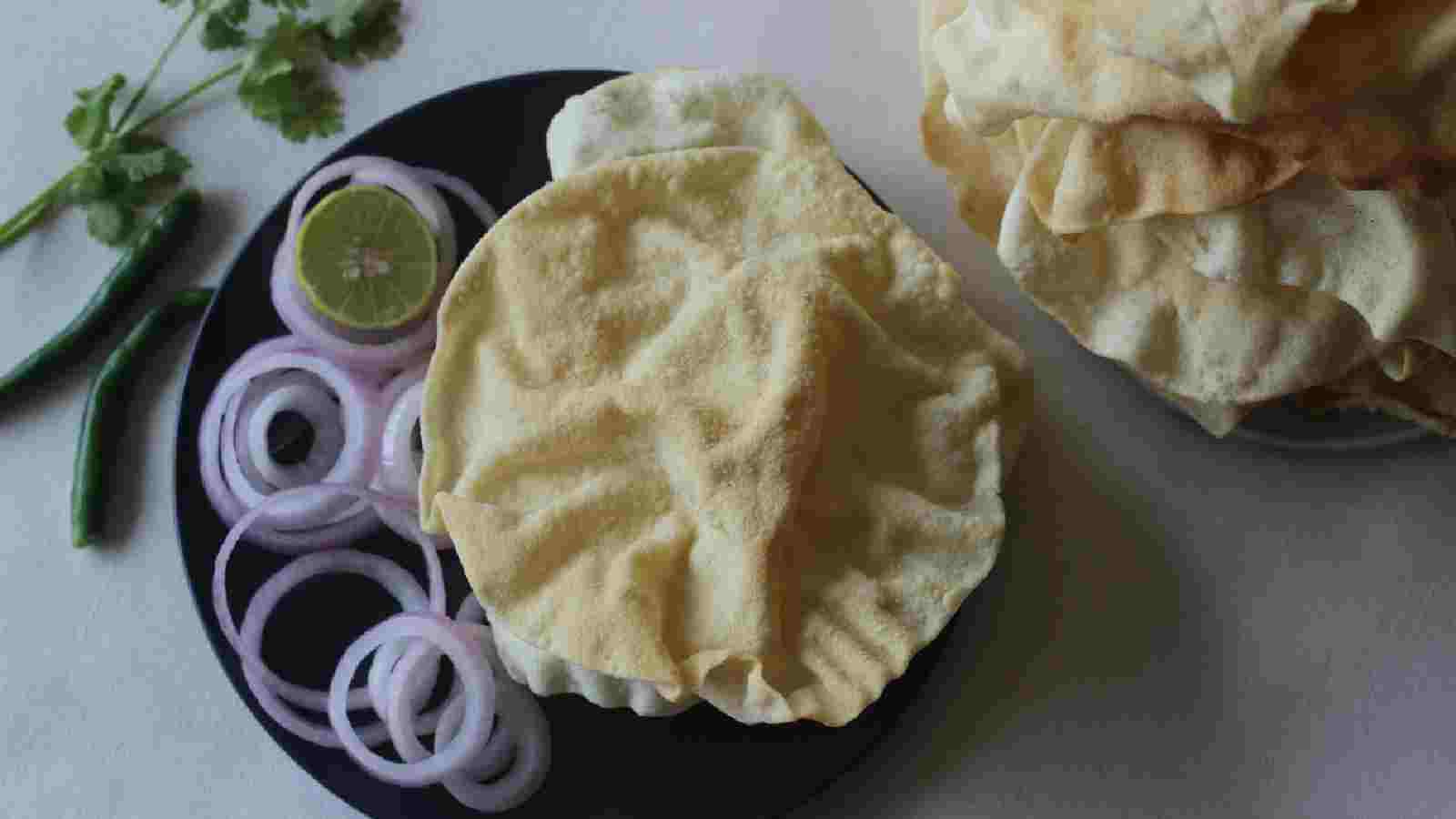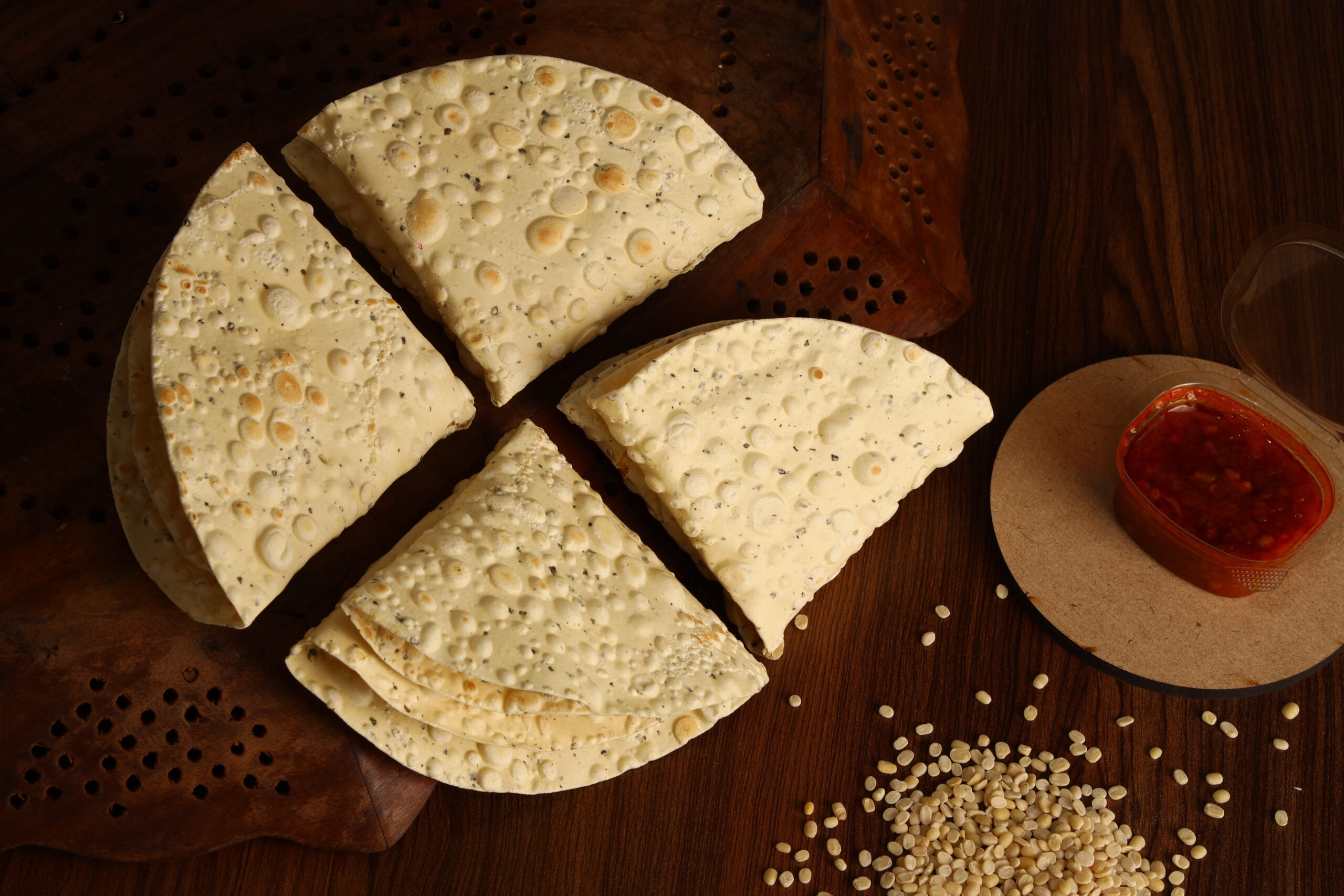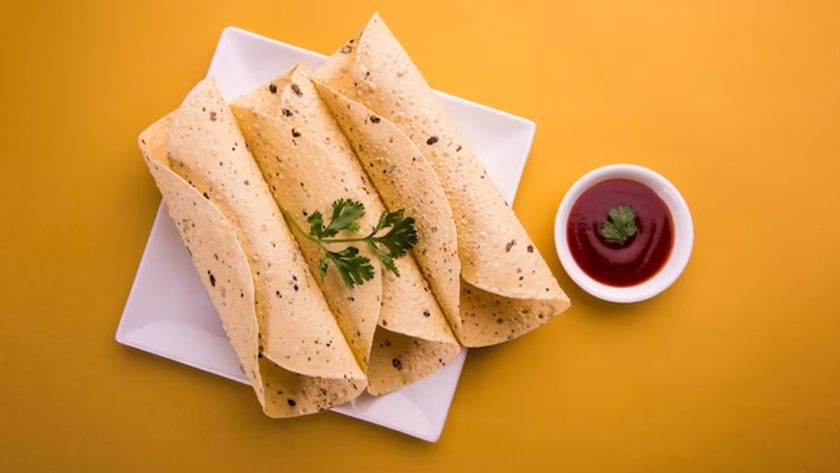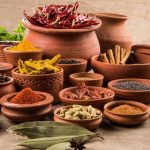Papad, or papadum, is one of the most liked Indian snacks and pantry staples you will find in literally every Asian house. These thin, crispy, and spicy crackers are made with minimal ingredients but have rich & unique flavors. Additionally, the nutritional benefits of papad make it a healthy go-to snack for every age group. You probably have had that traditional urad dal papad or masala papad, but the list doesn’t end here. There are countless types of Indian papads; each has a distinct taste and flavor according to its state.
In India, papads aren’t considered a side dish but a part of the overall dining experience. No party get-together are complete without it. Although you can find a variety of papads on the market today, the taste and aroma of homemade papads are just unmatched. And the best part is that they are super easy to make.
In this write-up, we will introduce you to the 10 different types of Indian papad you should definitely try. So, let’s start with the legendary one.
10 Different Types of Indian Papads You Will Definitely Love
Here’s a delightful selection of papad varieties you must try to savor the traditional flavors of Indian snacks:
1). Masala Papad
Masala Papad is a delightful and crunchy Indian snack that’s hard to resist. It starts with a crispy papad, which is then topped with fresh, diced tomatoes, onions, and coriander. To give it that extra zing, sprinkle some chaat masala and red chili powder, and finish it with a squeeze of lemon juice. It’s the perfect blend of spicy, tangy, and refreshing flavors. Not only does it make for a tasty appetizer, but it’s also light and easy to prepare.
A typical serving of Masala Papad contains around 50-70 calories, 5-10 grams of carbohydrates, 2-4 grams of protein, 2-3 grams of fat, and 1-2 grams of fiber. The nutritional value can vary depending on the type of papad and the toppings used, but it’s generally a light and satisfying snack that won’t weigh you down.
2). Rice Papad
Rice Papad is a popular type of papad in India, made from rice flour. Known for its light and crispy texture, Rice Papad has a neutral flavor, making it a versatile addition to many dishes. The process involves mixing rice flour with water and spices and then sun-drying it before frying or roasting.

Rice Papad provides a rich source of carbohydrates and protein. It is lower in fat compared to other fried snacks, making it a great choice for those seeking a light yet satisfying snack.
3). Spinach Papad
Spinach Papad, also known as Palak Papad, is a delightful twist on the traditional papad recipe that includes spinach. This addition gives the papad a unique taste and a vibrant green color, making it both flavorful and visually appealing. The spinach is mixed into the papad dough, which boosts its nutritional value.
Spinach Papad is packed with vitamins A, C, and K and iron and folate from the spinach. These nutrients make it a healthier option, supporting better vision, a stronger immune system, and overall health.
4). Pepper Papad
Pepper Papad is a popular snack famous for its spicy kick, thanks to the infusion of black pepper. It has a sharp and bold flavor that’s especially loved in southern India. The strong taste of this papad makes it unique and appealing to those who enjoy spicy foods.
In addition to its delicious flavor, Pepper Papad also offers health benefits. Black pepper is known for aiding digestion and boosting metabolism. This makes Pepper Papad a tasty snack that also contributes to better digestive health and metabolic function.
5). Sindhi Papad
Sindhi Papad stands out among Indian papad varieties for its thick texture and rich blend of spices. This papad is known for its strong, robust flavor that showcases the traditional tastes of Sindhi cuisine. The unique preparation involves carefully selecting spices, giving it a distinct and authentic taste that many snack lovers cherish. The bold flavor of Sindhi Papad offers a genuine experience of Sindhi’s culinary heritage.
Beyond its delicious taste, Sindhi Papad also provides nutritional benefits. It is a good source of dietary fiber and essential minerals from the spices used. This contributes to better digestive health and overall wellness. Adding Sindhi Papad to your diet can help support your digestion and offer a nutritious snack option.
6). Punjabi Papad
Punjabi Papad is well-loved for its rich flavor and crispy texture. Made from lentil flour mixed with spices, it captures the bold and vibrant tastes of Punjabi cuisine. This versatile papad can be enjoyed with meals or as a snack on its own, adding a delightful crunch to any dish.

Aside from its delicious taste, Punjabi Papad is a nutritious choice. It is high in protein and fiber, making it a satisfying and healthy option. The lentil flour provides important nutrients such as iron and B vitamins, contributing to a balanced diet. Enjoy Punjabi Papad as a tasty and nutritious addition to your meals.
7). Sago Papad
Sabudana Papad, made from sago (tapioca pearls), is a unique and popular snack in southern India. Its distinct texture and mildly sweet flavor make it different from traditional papads. Often enjoyed either on its own or as an accompaniment to meals, Javvarisi Papad offers a fresh twist to the usual papad experience.
Nutritionally, Sabudana Papad is rich in carbohydrates, providing a quick energy boost. It’s also low in fat, making it a good option for those watching their weight. This mix of taste and nutritional benefits makes Javvarisi Papad a tasty and healthy addition to your diet.
8). Aloo Papad
Potato Vadiyalu, also known as Aloo Papad, is a special type of Indian papad that includes potatoes in its dough. This papad is thicker than other types and has a hearty texture. It offers a satisfying crunch and a mild, savory flavor, making it unique compared to more traditional papads. Potato papad is perfect for those who want a more substantial and flavorful snack.
Nutritionally, Potato Vadiyalu is a good source of carbohydrates and dietary fiber, thanks to the potatoes. It also provides essential vitamins and minerals like potassium and vitamin C, making it a nutritious addition to your diet.
9). Urad Dal Papad
Urad Dal Papad is a popular snack made from urad dal (black gram) flour. This traditional papad is famous for its nutty flavor and crispy texture, making it a delightful choice, whether as part of a meal or as a standalone treat. Its rich taste and satisfying crunch make it one of the most loved papads in India. It can be enjoyed as an appetizer, a side dish, or just on its own.
Besides being tasty, Minapa Vadiyalu is also nutritious. It is rich in protein and fiber, making it a great option for those who want to increase their protein intake. Additionally, it provides important nutrients like iron and magnesium, which are essential for a balanced diet and overall health.
10). Pumpkin Papad
Pumpkin Papad is a unique type of papad that includes pumpkin in the mix. This addition gives it a mildly sweet taste and a special texture, making it different from other kinds of papad. The presence of pumpkin enhances the flavor and adds nutritional benefits.
Pumpkin is rich in vitamins A and C, as well as antioxidants. These nutrients help improve overall health and strengthen the immune system, making Gummadikaya Vadiyalu a tasty snack.
Conclusion
Papads are a delightful snack that adds a touch of spiciness to any meal. Each type offers a unique flavor and texture, like the light and crispy Rice Papad or the robust and hearty Potato Vadiyalu. These papads are delicious and provide nutritional benefits, such as being rich in protein, fiber, and essential vitamins. Whether enjoyed as a standalone snack or paired with your favorite dishes, these ten delicious types of papad are sure to become a favorite addition to your dining experience.
FAQs
Is Papad Healthy to Eat?
Papad can be a healthy addition to your diet if consumed in moderation. It is low in calories and can be a good source of protein and fiber, especially when made from lentils. However, fried papads can be high in fat and salt, so it’s better to opt for roasted or baked versions to enjoy the health benefits without the added calories and sodium.
Does Papad Take 7 Days to Digest?
No, papad does not take seven days to digest. This is a myth. Papad, like other foods, is typically digested within a normal digestive cycle, which ranges from 24 to 72 hours. The time it takes to digest can vary depending on the individual’s digestive health and other factors like the type of papad and how it is prepared.
Is Papad Good for Diabetes?
Papad can be included in a diabetic diet if consumed in moderation. It is low in carbohydrates, which can help manage blood sugar levels. However, diabetics should avoid fried papads due to their high-fat content and opt for roasted or baked versions instead. It’s always best to consult a healthcare provider for personalized dietary advice.
Are Papadums Healthy?
Papadums, when roasted or baked, can be a healthy snack option. They are low in calories and can provide some protein and fiber. However, fried papadums can be high in fat and salt, which may not be suitable for those looking to maintain a healthy diet.
Is Papadum Healthier than Chips?
Roasted or baked papadums can be a healthier alternative to chips as they are typically lower in fat and calories. They also offer some protein and fiber, depending on the ingredients. However, fried papadums and chips are similar in terms of fat content and should be consumed in moderation. Choosing the roasting or baking method can make papadums a better option.
How Many Calories Are in a Single Papad?
A single papad typically contains around 30 to 50 calories, depending on its size and ingredients. Roasted or baked papads are lower in calories compared to their fried counterparts. The exact calorie content can vary, so it’s important to check the packaging if you’re monitoring your calorie intake.
Can I Eat Papad in Weight Loss?
Yes, you can include papad in a weight loss diet if you choose healthier preparation methods like roasting or baking. These methods reduce the fat content, making it a low-calorie snack option. Papad can also provide some protein and fiber, which can help you feel full. However, it should be consumed in moderation as part of a balanced diet.



